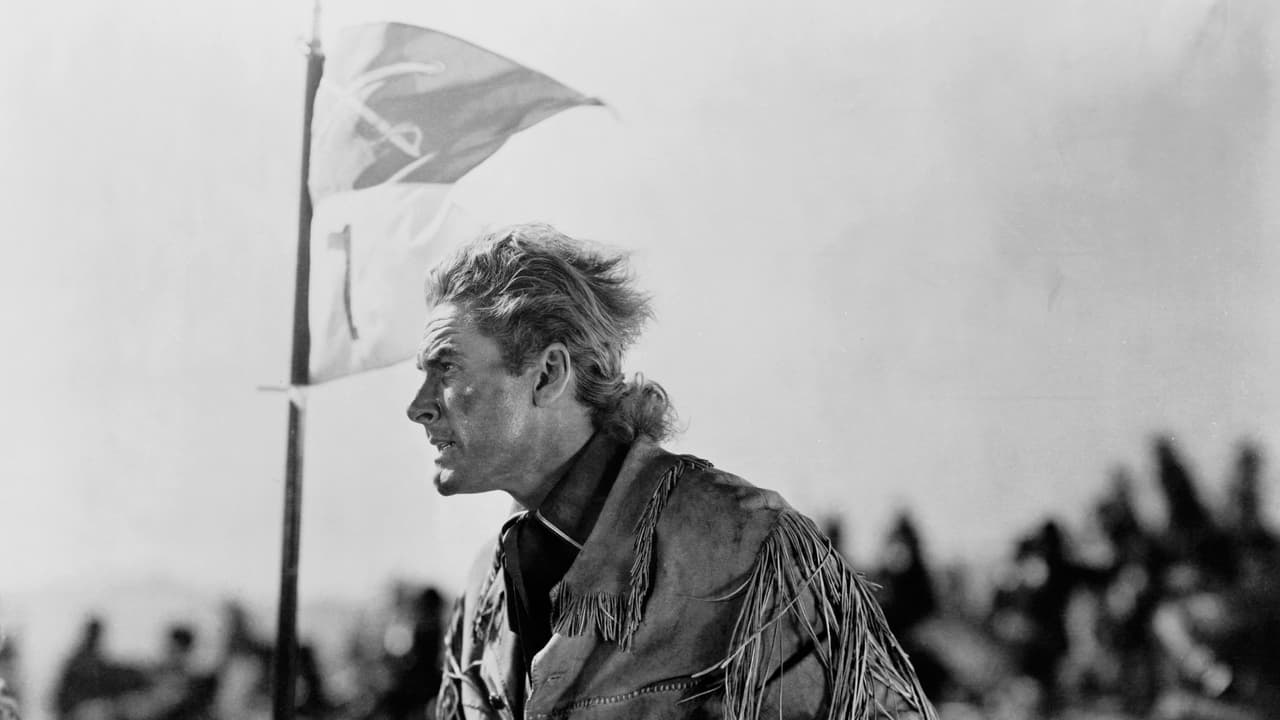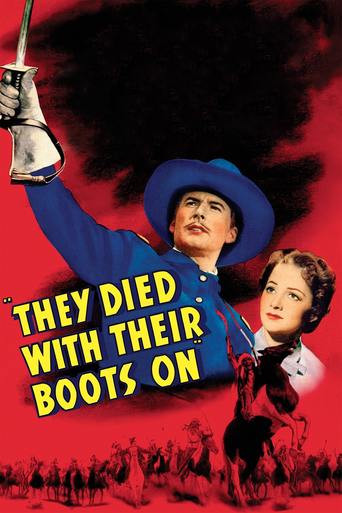

They Died with Their Boots On is a biopic about the famed General Custer, but if you're wondering how one battle can fill out an entire movie, you're in for a treat. The vast majority of the movie is about his early life. Turns out, Custer was a little scoundrel in his West Point days, holding the record of lowest grades and most broken rules and punishments. In-between losing his temper, disobeying his superiors, and picking fights with everyone, he also falls in love with Olivia de Havilland-in case you hadn't guessed, Errol Flynn plays Custer. I have no idea how historically accurate this movie is, but there are little details that, if true, are very funny. Errol has a penchant for eating raw onions, and while Olivia hates the very smell of them, when he comes calling, she joins him in an appetizer, suffering for true love. Speaking of suffering, Olivia's maid is played by Hattie McDaniel, and it's pretty amusing to watch their scenes together. Two years earlier they were in Gone with the Wind together, and Hattie beat Olivia out of an Oscar she very much felt she should have won. In They Died with Their Boots On, Olivia looks at Hattie like she absolutely hates her! I wonder why she couldn't just cover her real feelings and act nice when the camera was rolling.Errol Flynn is wonderful, as always, owning the screen with his magnetic, strong, vibrant, masculine presence. He's a born hero, as proved by his many famous film roles, and it's no effort to convincingly play a larger-than-life figure like General Custer. If you like Errol, or Errol and Olivia together, rent this epic for your next movie night. It's a very well done classic, and while some of the interactions and battle scenes with the Native Americans-keep an eye out for a very young Anthony Quinn-will be a little upsetting, it's still a good quality film with high production values. Plus there's quite a large supporting cast, including Arthur Kennedy, Gene Lockhart, Sydney Greenstreet, and Regis Toomey.
... View MoreThis is a strange movie, when you keep in mind that it was made as we were gearing up to go to war - again.It glorifies a rebel who won glory by constantly flying in the face of army orders, someone who won battles because he refused to follow orders, and knew better than the top brass.It presents the Battle of the Little Big Horn as the result of greed and corruption by army suppliers and former army top brass.Others will tell you that this movie has little basis in historical fact. That's true. Who cares? This was not made as a BBC documentary.But what was this movie trying to say in 1941, as the government poured millions of dollars into building up our army? Was this movie an indictment of army failure?
... View MoreOld Hollywood may have had its share of duds, but for sheer drama, spectacle, and romance, this 1941 cavalry epic is hard to beat. And that remains the case even in today's highly fictionalized digital age. Flynn never considered himself much of an actor. But here he proves otherwise. Dashingly handsome, tenderly romantic, and a compelling leader of men, he covers the bases in grand style. Heck, at West Point, he's not even very likable, but maybe the young Custer was just that arrogant. Sure, Hollywood's version of Custer takes more than a few liberties, shall we say, but at least it's not at the expense of the Indians. Fortunately, they're not demonized as was so often the custom. Instead, they fight for what is historically theirs, and on a moral footing equal to the white man. Also, it looks like Warner's hired about every extra in Hollywood for the climactic battle scene. Plus, that elegiac final scene between Custer and wife (DeHavilland) is unexpectedly sensitive and even moving. The petite actress remains a perfect counterpart to the virile Flynn, with her sweet-natured good looks and winning smile. And who better to put all these elements together in impressive style than old master Raoul Walsh. I don't know what Warner's paid him over the years, but I know it wasn't enough. Anyhow, this is Hollywood's so-called golden age hitting on all eight, even if it does memorialize grandiose fiction over mundane fact. Besides, who goes to movies for their factual content. I always thought that's what books are for.
... View MoreErrol Flynn (Custer) graduates from military school but only because the North is desperate for men to join the army to fight the Southern Confederates. His disciplinary record is the worst ever and were it not for the sudden outbreak of war, he surely wouldn't have made it. We follow Flynn's rise through the military ranks until he makes his final stand at Little Big Horn.The cast are all excellent with the exception of Charley Grapewin (California Joe) who plays one of those comedy drunken wagon drivers who are NEVER funny. He's meant to be an endearing character but he just irritates. There is also an English buffoon thrown in - another cast mis-calculation. But everyone else hits the mark, especially Flynn, Olivia De Havilland as his wife Libby, Arthur Kennedy as his adversary Ned Sharp and Anthony Quinn as Crazy Horse.There are many good scenes, eg, the confrontations between Flynn and Kennedy regarding the issue of selling alcohol to troops and rifles to the Indians, the final scene between Flynn and De Havilland as he prepares to go into battle for the last time, and the numerous horseback charges that Flynn leads. However, we could do without all the scenes with the stupid wagon driver. The film has comedy (NOT from the annoying wagon driver), action, drama and good actors that keep you watching despite it's length. Flynn is very likable as Custer and develops his character through to a man of conscience who gives Arthur Kennedy a satisfying pay-back time. What a shame that De Havilland sold Flynn's conditions at the end instead of exposing the corruption that had taken place to the general public. That would have caused the required shame. The Indians are the good guys in this film.
... View More